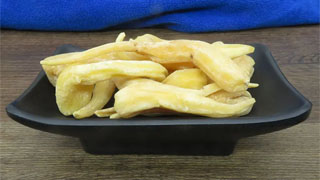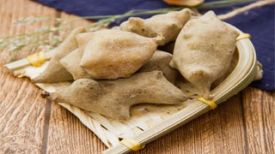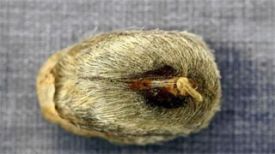
1. Aliases
Tu Bai Zhi, Guang San Qi, Carrot Qi, Nan Tian Qi, Shui Tian Qi2. Plant morphology
Biennial or perennial herbs, up to 1.5 meters tall. The root is thick and thick. The stem is robust, multi branched, nearly hairless or with fine pubescence at the bottom. Basal leaves have a long stalk, which is 5-20 centimeters long, and a broad sheath at the base; The leaf outline is oval shaped, with two pinnate divisions, measuring 10-30 centimeters in length. The first pinnate has a long stalk, with 3-4 pairs of two pinnates. The second pinnate has a short stalk, and the outline is oval lanceolate. The feather is fully or deeply split, and the last lobe is oval or elliptical oval shaped, with coarse serrations and sparse soft hairs on the back; The upper leaves of the stem have short stalks or no stalks, the base is sheathed, and sometimes the edges are hairy. The diameter of the compound umbel inflorescence is 2.5-8 centimeters, with 4-15 rays; Small bracts 5-8, ovate to lanceolate, apex acute, reflexed; The flowers are white, usually with green or yellow hues; The style is twice longer than the base of the style. Double hanging fruit is oblong to linear oblong, 5-10 millimeters long, smooth or sparsely with small nodules. The apex gradually narrows into a beak shape, and the commissure surface is significantly contracted. There is often a ring of white small bristles at the top of the fruit stalk. The transverse section of the fruit is nearly circular, and the oil tube is not obvious. The endosperm has deep grooves. The flowering and fruiting period is from April to June.
3. Origin distribution
Born in the forests or roadsides of high mountain slopes ranging from low mountains and hills to an altitude of 4500 meters, as well as in crevices along valleys and streams. Distributed in Hebei, Shanxi, Inner Mongolia, Liaoning, Jiangsu, Zhejiang, Anhui, Jiangxi, Henan, Hubei, Hunan, Sichuan, Yunnan, Shaanxi, Gansu, Xinjiang and other places.
4. Harvesting and processing
Harvest 2-3 years after planting, dig roots in spring and autumn, cut off the beard and tail, scrape off the outer skin, scald with boiling water, dry in the sun, or dry on a low heat kang.
5. Characteristics of medicinal herbs
The root is conical, slightly curved, bifurcated, gradually tapered at the bottom, semi transparent, 3-12 centimeters long, and 1-1.5 centimeters thick in the middle. The appearance is yellow brown or grayish brown, with irregular vertical wrinkles, fine circular lines on the upper part, visible protruding transverse skin pores, and some have healing scars on the side. Solid, heavy, with a yellow or yellow brown cross-section and a keratin like appearance. Mild qi, slightly spicy taste, slightly numb.
6. Nature, taste, and meridian tropism
Mild in nature, sweet and spicy in taste. Guipi Meridian, Stomach Meridian, and Lung Meridian.
7. Effect and function
Nourishing Qi and strengthening the spleen, promoting blood circulation and relieving pain. Belonging to the category of blood activating and blood stasis resolving drugs, it is a blood activating and analgesic drug.
8. Clinical applications
Internal administration: decoction, 9-15 grams; Or at the end of the study, 3-5 grams per session; Or soak in wine. External use: Apply after grinding. Indications: Spleen deficiency, abdominal distension, fatigue, lack of appetite, lung deficiency, coughing and wheezing, body deficiency, spontaneous sweating, frequent nocturia in the elderly, qi deficiency and edema, fatigue and lower back pain, headache, dysmenorrhea, and bruises.
9. Pharmacological research
Ethanol extract of E Shen has pharmacological effects such as strengthening, promoting growth, enhancing immunity, anti-inflammatory, hypoxia resistance, improving body adaptability, and sedation
10. Chemical composition
Roots contain anthraquinone, iso anthraquinone, 2- (3 ", 4", 5 "- trimethoxybenzyl) -3- (3 ', 4' - methylenedioxybenzyl) butyrolactone, deep yellow water apinone, (Z) -2-Angeloylmethyl-2-butenoic acid, O-3-methoxy-4,5-methylenedioxycinnitol. It also contains more than ten kinds of essence oils, such as praeruptorin, scopolamine, uracil, apigenin, quercetin, rutin, α - pinene, β - myrcene, d-limonene, and paracymosin.
11. Taboos for use
Pregnant women should use with caution.
12. Compatibility prescription
① Treatment for food accumulation: 9 grams of E Shen, 6 grams of green skin and 6 grams of dried tangerine peel each. Boiled in water. (Hubei Journal of Chinese Herbal Medicine)
② To treat cough caused by lung deficiency: 12 grams each of E Shen, Lily, and Tian Dong, and 1 gram each of Chuan Bei. Boiled in water. (Chinese Herbal Medicine in Wanxian County)
③ To treat excessive urination in the elderly: 12g of E ginseng, 9g of mulberry cuttlebone, and 9g of Yizhiren each. Boiled in water. (Chinese Herbal Medicine in Wanxian County)
The content of the article is for clinical reference only. Non professionals in traditional Chinese medicine are not allowed to try medication.


